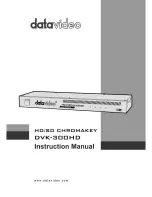
6/10/13 – 11
5
Rope Wrench Set-Up Instructions
The following nomenclature will be used for various
parts of the Rope Wrench:
Figure 4. Rope Wrench Nomenclature
Step 1. Attach Tether To Rope Wrench
1.
Unscrew and remove the Tether Attachment Point
bolt.
2.
Place the free end of the tether between the Side
Plates at the Tether Attachment Point.
3.
It is recommended that a reversible thread-locking
fluid be applied to the bolt to prevent loosening.
4.
Reinsert the bolt.
5.
Make sure the bolt is screwed in all the way.
Do not:
repeatedly remove and attach tethers.
force the bolt into the socket.
use the device if the bolt will not fully screw in.
use the device if the bolt is loose.
CAUTION: TIGHTEN TETHER BOLT
The bolt at the Tether Attachment Point may come
unscrewed during climbing if not properly tightened.
This will cause the tether to detach and the render the
Rope Wrench useless.
Step 2. Attach Rope Wrench
1.
Press the spring-loaded tab on the Slic Pin inward
and pull the Slic Pin out of the first side plate. There
is a small recess on the inside of the other side
plate that seats the spring-loaded tab, allowing the
climbing rope to be inserted without removing the
tab completely.
2.
Place the climbing rope along the Wheel.
3.
Push the Slic Pin back in such that the climbing
rope is secured between the Slic Pin and the Wheel.
Do not install the Rope Wrench upside-down (see
Figure 5b
for proper installation orientation.) It will not
function at all if upside-down and may interfere with the
friction hitch.
CAUTION: SECURE SLIC PIN
The Slic Pin relies on the actuation of a small spring to
become secured. Before use, ensure that the Slic Pin is
fully inserted, constrained, and uninhibited by any rope
fibers, and that the metal tab clicks outward. Failure to
do so will cause the Rope Wrench to come off of the
climbing rope and render the Rope Wrench useless.
WARNING: INSTALLATION ORIENTATION
Do not install the Rope Wrench upside down. Failure to
do so could interfere with the function of the friction
hitch and can lead to serious injury or death.
Figure 5a. Incorrect Rope Wrench Orientation
Figure 5b. Correct Rope Wrench Orientation
Note: When installed correctly and pulled down, the
Rope Wrench should bend the climbing rope into an
S-shape.
Step 3. Repeat Bounce Test
With the Rope Wrench installed, repeat the test
described in
Step 6
of the previous section.
Tether
Attachment
Point
Slic
Pin
Wheel
Side
Plates
Engage





























